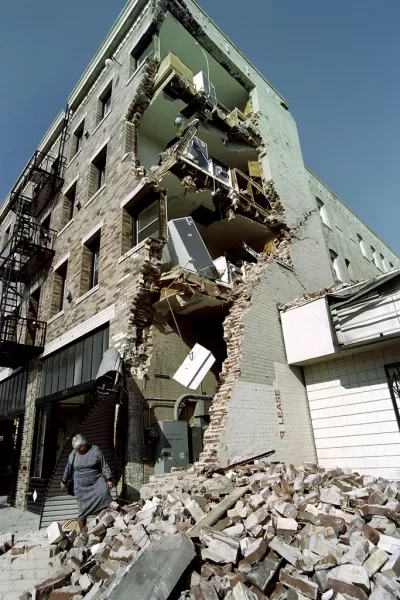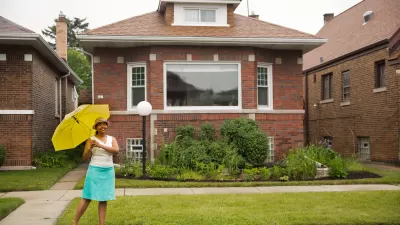Decades in the making, the Los Angeles City Council has approved regulations requiring the retrofit of vulnerable wood and concrete buildings.

Last week, the Los Angeles City Council voted unanimously to require that 15,000 buildings across the city be retrofitted to withstand the shaking caused by earthquakes, reports Rong-Gong Lin II, Rosanna Xia, and Doug Smith of the Los Angeles Times. The new regulations give property owners five years to upgrade wood buildings and 25 years to upgrade concrete buildings in order to prevent the type of building collapse that was most recently seen in the 2011 earthquake that struck Christchurch, New Zealand. The unknown remains how the retrofitting will be paid for, and by whom.
“The City Council is still mulling exactly how the retrofit costs will be shared. The law currently allows owners to increase monthly rents by up to $75 to pay for required earthquake retrofits, but both sides say they do not think Los Angeles renters can afford such a hike…
To help pay for the costs, apartment groups are looking for additional financial support, such as breaks on property and state income taxes and business license and building permit fees for owners who retrofit.”
The Times report states that the city will begin sending out notices to some 13,500 owners of wood buildings next month, with the owners of 1,500 concrete buildings being contacted at a later date. The cost to upgrade a single concrete building could approach close to $1 million.
FULL STORY: Los Angeles will have the nation's toughest earthquake safety rules

Manufactured Crisis: Losing the Nation’s Largest Source of Unsubsidized Affordable Housing
Manufactured housing communities have long been an affordable housing option for millions of people living in the U.S., but that affordability is disappearing rapidly. How did we get here?

Americans May Be Stuck — But Why?
Americans are moving a lot less than they once did, and that is a problem. While Yoni Applebaum, in his highly-publicized article Stuck, gets the reasons badly wrong, it's still important to ask: why are we moving so much less than before?

Using Old Oil and Gas Wells for Green Energy Storage
Penn State researchers have found that repurposing abandoned oil and gas wells for geothermal-assisted compressed-air energy storage can boost efficiency, reduce environmental risks, and support clean energy and job transitions.

Updating LA’s Tree Rules Could Bring More Shade to Underserved Neighborhoods
A new USC study finds that relaxing Los Angeles’ outdated tree planting guidelines could significantly expand urban tree canopy and reduce shade disparities in lower-income neighborhoods, though infrastructure investments are also needed.

California's Canal Solar Projects Aim to Conserve Resources and Expand Clean Energy
California’s Project Nexus has begun generating electricity from solar panels installed over irrigation canals, with researchers and state agencies exploring statewide expansion to conserve water and boost clean energy production.

HHS Staff Cuts Gut Energy Assistance Program
The full staff of a federal program that distributes heating and cooling assistance for low-income families was laid off, jeopardizing the program’s operations.
Urban Design for Planners 1: Software Tools
This six-course series explores essential urban design concepts using open source software and equips planners with the tools they need to participate fully in the urban design process.
Planning for Universal Design
Learn the tools for implementing Universal Design in planning regulations.
Heyer Gruel & Associates PA
City of Moreno Valley
Institute for Housing and Urban Development Studies (IHS)
City of Grandview
Harvard GSD Executive Education
Salt Lake City
NYU Wagner Graduate School of Public Service
City of Cambridge, Maryland




























